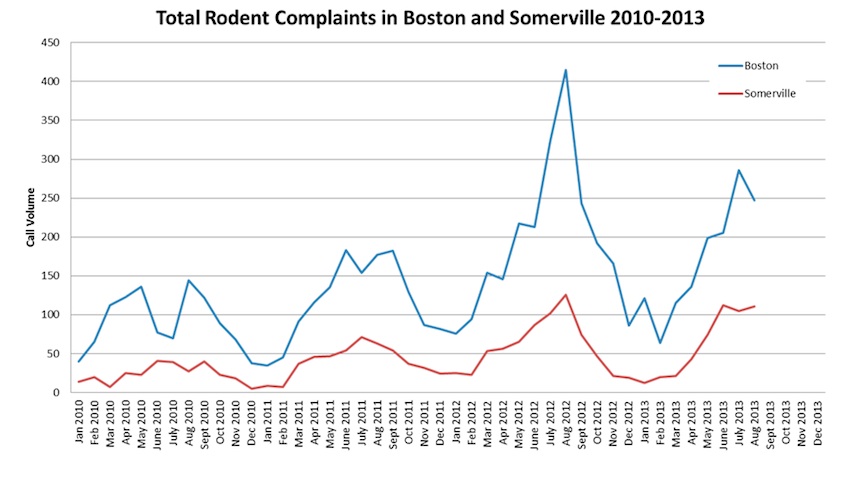Somerville’s War On Rats Is a Result of Warm Winters

Rat Photo via Shutterstock.com
Somerville has had a rat problem since 2009, and to fight back against the infestation, they are preparing for battle against the rodents.
“It’s war,” officials said in announcement last week, which detailed their latest attempt to intensify existing rodent control programs with aggressive and cutting edge initiatives, called the Residential Rodent Control Assistance Program. The updated program will include free rodent control for qualifying residential properties, and a uniform residential trash barrel program, among other things.
“These new initiatives will not only build upon the multi-tiered rodent control efforts we already have in place—they will allow us to tackle this problem from nearly every angle. With the participation of the community, Somerville will lead the way in municipal integrated pest management,” said Mayor Joe Curtatone.
Several factors have come into play when talking about the spike in the rat population in certain sectors of Somerville over the years—specifically weather.
Besides construction work in both Assembly Square and Union Square, where two major projects are churning up bits of earth that may have been inhabited by the rodents—something Boston saw during the construction of the Big Dig—it’s the unseasonably warm New England weather over the last two seasons that is mostly to blame for the frequent rat sightings.
“Construction doesn’t bring rats in, it disrupts the population so people see them,” said Somerville’s director of communications, Denise Taylor. “We first saw the trend go upward in 2009, but we saw another spike after the winter of 2012. After a mild winter, it wasn’t cold enough for the populations to die off. It used to be that we had cold enough winters that they naturally reduced the population, but what’s happening now, they don’t die off, so they continue to reproduce. There is a greater population because of it, and people see them more.”
Testing for whether construction is a leading issue is harder to pinpoint, but developers are required to bait construction sites for the entire length of a project to deter the potential of rats scurrying from one place to the next.
Of course, other factors are involved she said, including unattended trash, or opened receptacles that give rodents easy access to discarded food.
Somerville isn’t exclusive in having a “rat problem” per se, according to Taylor. Data used to track rodent reports is on par with other major metropolitan areas like Chicago and neighborhoods in New York City, so to single out the community as a breeding ground for the animals would be uncharacteristically unfair.
Taylor said the city has been using SomerStat, a special program designed to keep an eye on city happenings and complaints, to wrangle data since at least 2009.
According to that data, between January and July of 2011, the city saw a rise in complaints, and received 271 calls. In that same time period in 2012, those number reached 411 calls. So far this year, the number has dipped slightly, but is still high in comparison. In 2013 it was down to 387 rodent calls.
“We want to make sure it’s on the radar, ever since that mild winter [when it increased],” said Daniel Hadley, director of the SomerStat program.
“One thing I have learned about rodents, when you have a particularly harsh winter it will impact their population.”
Taylor said officials have compacted numbers with cities across the northeast, and the incidents and upticks are comparable with Somerville’s own “bumps, dips, and spikes.”
“Everybody has rats—what’s different is we have rat data and we have a rat plan,” said Taylor. “We haven’t just been tracking the data, we look for hot spots and problem areas, and we look for trends in terms of related complaints. Everybody has a problem, but we are just trying to do something about it.”
As the warm weather lingers in Massachusetts, bringing mild days with temperatures in the 60’s in late November, officials are staying focused on casting a net across the city, to make sure the numbers don’t surpass those recorded in the past.
Below is a comparative map showing the spike in rodent complaints in both Boston, and Somerville, from 2010 through 2013:



